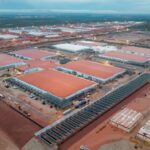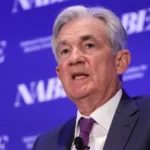The ongoing evolution of the cryptocurrency landscape is steering investors away from mere hype and speculative whitepapers toward substantial criteria encompassing execution, adoption, and ecosystem delivery. As this market matures, projects are increasingly evaluated based on actual traction, robust technology, and transparency.
In this competitive environment, notable players are emerging, ranging from established giants like Ethereum to promising contenders such as BlockDAG. Recent insights highlight four standout projects, each weaving its unique narrative, but one in particular stands out for its combination of real-world momentum, technical depth, and a compelling presale opportunity.
BlockDAG has distinguished itself by taking action rather than waiting for market validation. With over 3 million downloads of its X1 mobile miner app, the platform has already shipped more than 20,000 physical mining units, ramping up production to 2,000 units weekly. The ongoing presale has amassed over $420 million, with nearly 27 billion BDAG tokens sold. Currently, a batch price stands at $0.0304, but the TGE code permits a final entry point of just $0.0018, incentivizing early commitment with a ranked airdrop structure. Genesis Day, scheduled for November 26, marks the transition from presale to a fully operational mainnet, further solidifying the case for BlockDAG as a leading investment opportunity.
Unlike many other projects that remain in the ideation or testnet phases, BlockDAG is advancing with a scalable Layer-1 blockchain and a fully integrated ecosystem. This ecosystem encompasses features like a low-code smart contract builder, a dedicated BlockDAG Explorer, and global partnerships, such as with the BWT Alpine Formula 1® Team. As of now, the return on investment since the first batch has reached an astounding 2940%, enhancing the allure of early access through the TGE code.
Turning to Ethereum, the platform still reigns as the foremost Layer-1 network by market capitalization, boasting a value exceeding $350 billion. While Ethereum continues to lead in DeFi applications, it increasingly relies on third-party Layer-2 solutions like Arbitrum and Optimism, raising concerns about its structural limitations. With fluctuating gas fees that often render smaller transactions inefficient and costly, Ethereum appears more as a long-term infrastructure asset rather than a high-growth pre-sale candidate.
On the other hand, Hedera (HBAR) has managed to establish a niche in enterprise blockchain, supported by major corporate giants including IBM and Google. Its consensus service allows for high-speed, low-cost transaction verification, especially in tokenizing carbon credits—an area attracting significant regulatory interest. However, despite its corporate backing, Hedera has experienced tepid enthusiasm within the broader crypto community, limiting retail participation and developer growth compared to platforms like Ethereum or Solana.
World Liberty Financial positions itself as a sovereign financial movement, aspiring to build a decentralized financial system free from government oversight. Although its narrative resonates with anti-establishment investors, the project suffers from a lack of technical documentation and independent audits. As a result, its infrastructure remains untested and speculative, contrasting starkly with BlockDAG’s proven hardware delivery, working mobile mining system, and fully audited contracts.
In summary, while Ethereum continues to be a heavyweight player, Hedera leans heavily on enterprise capabilities, and World Liberty Financial presents an idealistic vision, BlockDAG emerges as the most compelling option combining presale momentum, tangible infrastructure, community engagement, and a well-defined roadmap. With a remarkable $420 million raised and an impending Genesis Day set for November 26, the window for securing entry before the upcoming price alignment with public market expectations is rapidly closing for investors seeking the best cryptocurrency opportunities.







